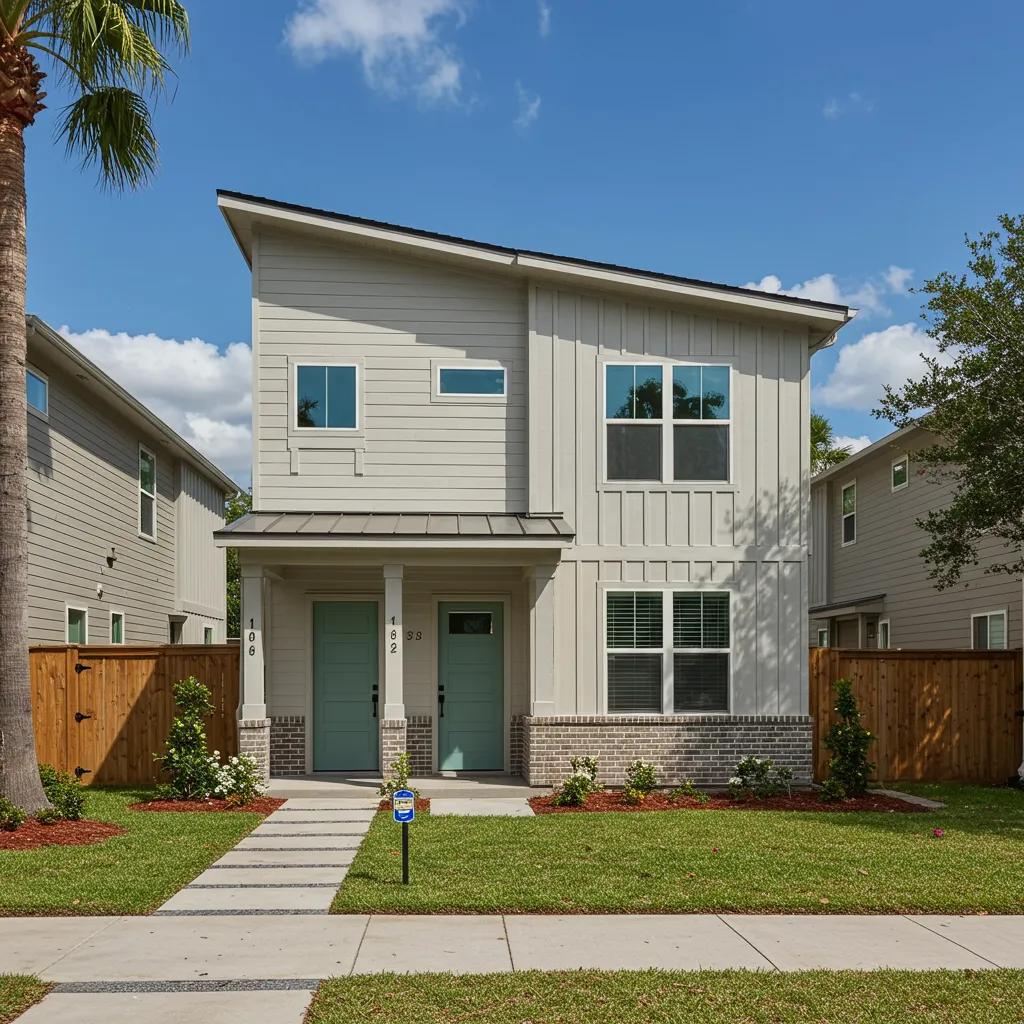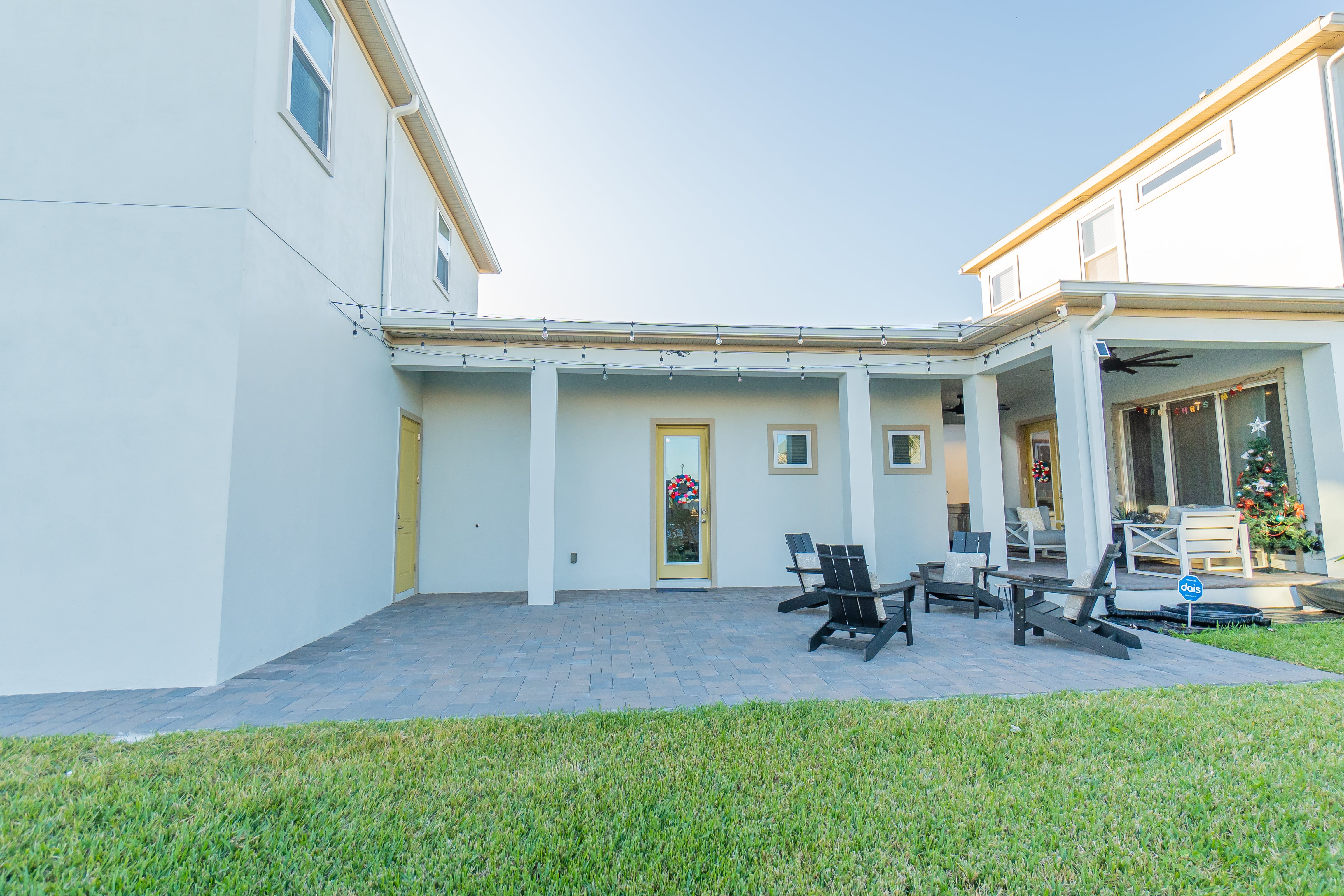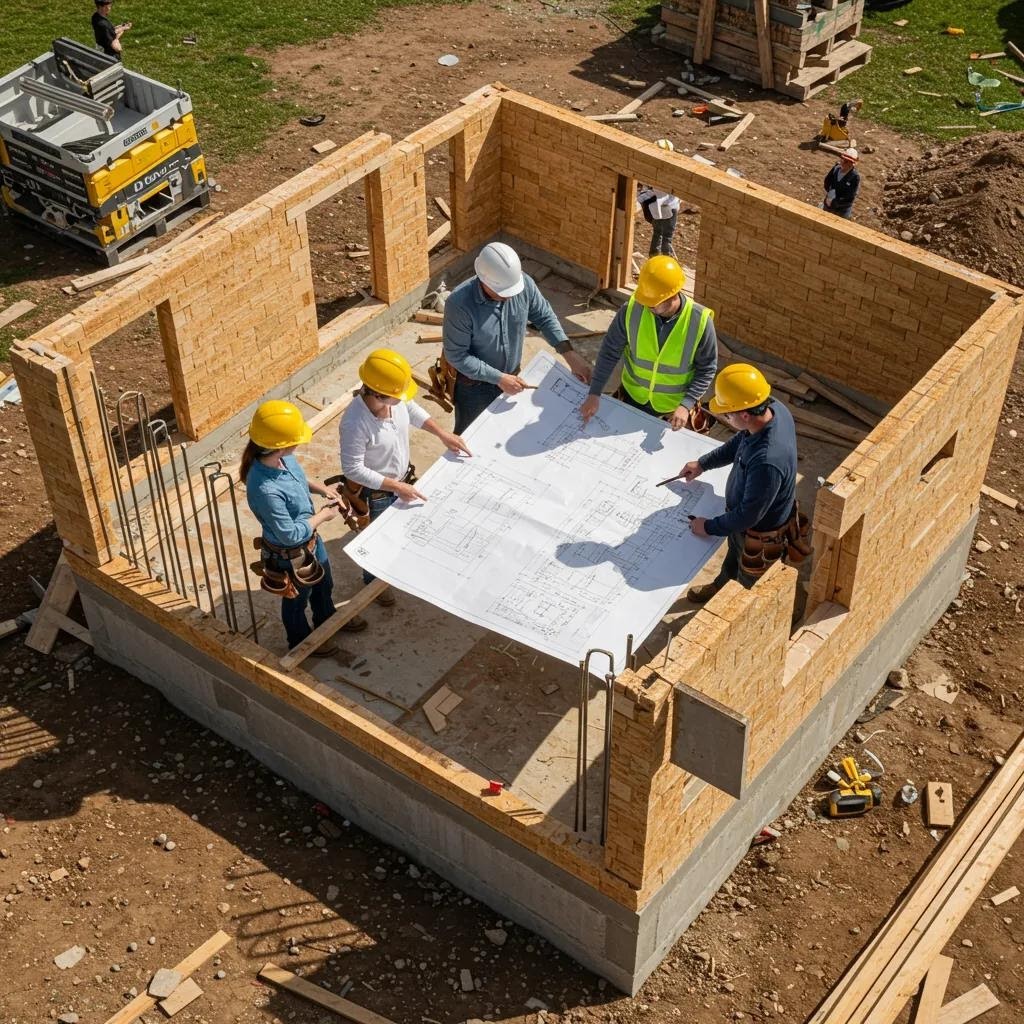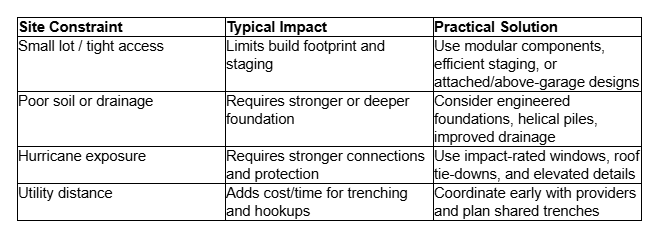Top 5 Common Challenges in Building an Accessory Dwelling Unit in Orlando: Solutions for Homeowners

Accessory dwelling units (ADUs) are secondary living spaces that provide homeowners flexible space for family, rental income, or aging-in-place solutions. This article explains the top five challenges homeowners face when building an ADU in Orlando and how to solve them. You will learn clear definitions, practical reasons these challenges occur, and step-by-step remedies that reduce delays, control costs, and improve long-term value. This guide covers zoning and permit hurdles, realistic cost management, site and design constraints specific to Central Florida, contractor selection criteria, and the property value and rental implications of adding an ADU. Each section defines the issue, explains why it matters, gives tangible examples, and finishes with actionable next steps so you can move forward with confidence. The city-specific detail includes setback and lot-size considerations, permit process steps, impact fee examples, hurricane-resistant design basics, and financing options for studio through two-bedroom units. Read on for practical checklists, tables comparing typical costs and site solutions, and clear criteria for vetting ADU contractors in Orlando.
What Are the Key Zoning and Permit Challenges for ADU Construction in Orlando?

An ADU zoning and permit challenge is the collection of local rules—setbacks, lot size minimums, parking requirements, and permit procedures—that determine whether and how you can build a secondary dwelling on your property, and these rules exist to protect neighborhood character and public safety. These regulations work by limiting where an ADU can sit on a lot and how big it can be relative to the main dwelling, which directly affects feasible layouts, foundations, and access. The practical benefit of understanding these rules early is avoiding design rework, costly resubmittals, and permit delays that push timelines and add expense. Below we break down key ordinance attributes you should verify with planning staff and provide a simple table of Orlando-specific attributes to scan quickly. After clarifying the rules, we outline the permit steps and common reasons applications stall so homeowners can prepare complete submissions and avoid routine setbacks.
What Orlando zoning restrictions affect ADU building projects?
Orlando zoning restrictions for ADUs typically cover lot size minimums, maximum ADU square footage or floor-area ratio limits, required setbacks from property lines, and parking or access conditions that differ by zoning district. These rules function by defining numeric thresholds—such as minimum rear-yard setbacks and limits on lot coverage—that directly constrain where an ADU can be sited and how large its footprint can be. An example scenario: a homeowner on a 7,000 sq ft lot must check minimum lot size and rear setback distances before sizing an ADU, because violating setbacks will trigger redesign or a variance process. Understanding these numeric rules early helps guide whether a detached, attached, above-garage unit, or a garage conversion is feasible without variances. Confirming these elements up front reduces surprises during design and speeds the permit path to inspection.
How do setback and lot size rules impact ADU design in Central Florida?
Setback and lot size rules determine the buildable envelope—the area where walls and foundations can legally be placed—and this directly influences whether an ADU must be smaller, attached to the main house, or built above an existing garage to meet code. When side or rear setbacks are tight, designers use vertical solutions such as above-garage units or two-story attached ADUs to gain living area while respecting horizontal limits. Design workarounds like reducing footprint, shifting entries, or using compact mechanical layouts can preserve functionality while complying with numeric limits. These constraints also affect stormwater planning and landscape buffers, so early site measurements help select the best ADU form—detached ADU, attached ADU, garage conversion, or above-garage unit—before investing in full plans.
What is the ADU permit application process in Orlando?
The ADU permit application process in Orlando generally follows a sequence: pre-application or checklist review, plan submission to planning and building departments, technical review cycles, permit issuance, construction inspections, and final approval. Typical submission documents include site plans showing setbacks and utilities, architectural plans illustrating floor area and elevations, structural calculations if required, and permit application forms with owner/builder declarations. Common reasons for re-submittal include incomplete site details, missing utility coordination notes, and noncompliant setback calculations, which extend review cycles and delay start dates. Preparing a complete packet and confirming local submittal checklists before filing helps reduce rejections and keeps the project on a predictable schedule.
How does TEK Construction Group simplify ADU permitting and inspections?
TEK Construction Group handles permits and inspections as part of their ADU construction service, meaning they file applications, coordinate reviews, respond to plan-check comments, and manage inspector schedules on behalf of homeowners. This service reduces homeowner burden by consolidating technical communications with planning and building departments and by tracking inspection timelines so construction progresses without unnecessary stops. TEK’s permit-handling approach typically includes preparing required documents, submitting on the homeowner’s behalf, and addressing required revisions, which shortens the learning curve for first-time ADU developers. Using a contractor that manages permitting mitigates common procedural delays and frees homeowners to make design choices rather than navigate administrative hurdles.
Different Orlando zoning attributes and typical distances are summarized below for quick reference.

This table clarifies which numeric values most commonly influence ADU feasibility and highlights why early measurement and planning are beneficial to avoid redesign and delays.
How Can Homeowners Manage the Cost of Building an ADU in Orlando?

Cost management for ADU construction is about understanding baseline price ranges, identifying the largest cost drivers—site work, foundations, utilities, and finish levels—and using contracting and financing strategies to limit overruns and protect homeowner budgets. A clear benefit of early budgeting is the ability to choose a unit size and finish level that aligns with financing ability and expected rental income or family use. Below we present an EAV-style comparison of typical unit types and cost ranges, followed by lists of common unexpected expenses and available financing options to help homeowners plan realistically. After explaining cost drivers, we describe how fixed-price contracts can be used to reduce financial uncertainty and give homeowners transparency through a predictable scope.
What are typical ADU construction costs by unit size in Orlando?

This comparison clarifies how size impacts cost and schedule, helping homeowners match scope to financing and intended use.
What unexpected expenses and impact fees should homeowners expect?
Unexpected ADU expenses commonly arise from site prep, utility hookups, impact fees, and required corrective work uncovered during construction, and planning with a contingency reduces financial risk. Homeowners should anticipate potential costs such as tree removal, soil remediation, extended foundation work if soil conditions demand it, utility extension fees for water and sewer, and city impact fees that vary by service district. A practical budgeting rule is to set aside a contingency of 10–20% of construction costs to handle unforeseeable issues without derailing the project. Preparing for these items early helps select the correct financing product and prevents last-minute borrowing at higher cost.
- Site preparation: grading, tree removal, and drainage modifications.
- Utility connections: water, sewer or septic tie-ins, and electric service upgrades.
- Impact and permit fees: local charges that may be assessed at permit issuance.
Planning with a realistic contingency and early coordination with utility providers reduces surprises and keeps the project moving forward.
Which financing options are available for ADU projects in Central Florida?
Homeowners commonly finance ADU construction through several vehicles: construction-to-permanent loans, home equity lines of credit (HELOC), cash-out refinancing, and personal loans, each with distinct advantages and trade-offs. Construction-to-perm loans bundle construction financing with long-term mortgage conversion, which simplifies payback but requires documentation and underwriting; HELOCs offer flexible draw access but variable rates; cash-out refinance consolidates the mortgage and construction cost into one loan; and personal loans are faster but often have higher interest rates. Deciding which option to use depends on factors like existing equity, timeline, interest-rate tolerance, and the homeowner’s credit profile. Comparing pros and cons and consulting a lender early helps choose the right financing route for your ADU timeline.
How do TEK Construction Group’s fixed-price contracts prevent cost overruns?
A fixed-price contract is an agreement where the contractor commits to a predetermined price for a defined scope of work, which protects homeowners from many common cost escalations and provides budget certainty during construction. TEK Construction Group uses fixed-price contracts to reduce surprise costs, outlining what is included in the scope and how change orders will be handled if homeowners request modifications. While fixed-price agreements limit exposure to material and labor cost shifts for the defined scope, change orders for added scope or unforeseen conditions are handled through agreed procedures to maintain transparency. Choosing a contractor that offers fixed-price contracts and clear change-order communication helps homeowners avoid unexpected bills and manage finances with confidence.
What Design and Site Challenges Commonly Arise When Building an ADU in Central Florida?
Design and site challenges for ADUs in Central Florida revolve around limited lot access, soil and drainage conditions, hurricane exposure, and matching the ADU’s appearance to the primary home so the addition fits neighborhood character. These constraints influence foundation selection, construction logistics, and structural choices that improve resilience against tropical storms. The practical benefit of addressing these challenges early is reducing weather-related risk, ensuring durable utility connections, and creating an ADU that performs well and attracts tenants or buyers. Below we explore small-lot mitigation strategies, utility coordination steps, hurricane-proofing best practices, and how custom design choices preserve curb appeal.
How do small lot sizes and site access affect ADU construction?
Small lots create logistical constraints for staging, equipment access, and foundation layout, and these constraints may increase construction labor time, require modular or off-site elements, or limit detached ADU footprints. A typical mitigation strategy is to plan a compact construction staging area, use modular or prefabricated components to minimize on-site assembly time, and select foundation types suited to restricted access such as shallow slab or helical piles when appropriate. Early site assessment should produce a checklist that covers access routes, tree protection, temporary storage, and crane or hoist needs so the construction plan matches site realities. Addressing these site constraints in design reduces unexpected delays and keeps the build on schedule.
What are the best practices for utility connections and hurricane-proof ADU design?
Utility connections typically follow a sequence of contacting local providers, obtaining permits for taps or extensions, and coordinating meter installations; each step adds time and potential fees that should be scheduled early in the project. Hurricane-resistant design basics include reinforced roof-to-wall connections, impact-rated windows or shutters, elevated or properly designed foundations to address flooding, and continuous load paths to transfer wind forces safely to the ground. Coordinating with electric, water, and sewer providers early prevents scheduling conflicts, and integrating hurricane-resistant details into the plan reduces retrofit costs later. These measures together ensure the ADU is both functional and resilient in Central Florida’s climate.
How does TEK Construction Group customize ADU designs to match existing homes?
TEK Construction Group offers custom ADU designs that aim to match materials, rooflines, and color palettes of the existing home so the new unit integrates visually and functionally into the property. Their process includes design reviews to select compatible siding, trim, and roofing details, and to align window styles and entry locations for cohesive curb appeal. Matching proportions and scale helps the ADU feel like an intentional addition rather than an afterthought, which benefits neighborhood aesthetics and resale value. Homeowners who prioritize compatibility benefit from a customized design that preserves property character while delivering modern ADU amenities.
Below is a comparison table of common site constraints and recommended solutions to help you evaluate trade-offs quickly.

This table helps prioritize site assessments and design choices that reduce risk and cost overruns during construction.
How Do Homeowners Find Reliable ADU Contractors in Orlando?
Finding a reliable ADU contractor is about verifying licensing and insurance, confirming relevant ADU experience and completed projects, reviewing references and contracts, and spotting red flags like unclear scopes or missing permits. The practical advantage of thorough vetting is reduced legal and financial risk, faster permitting through local experience, and more predictable timelines. Below are checklists to help homeowners evaluate contractors and a discussion of which portfolio items matter most for ADU work. We also explain how local credentials and a proven track record improve outcomes for Orlando ADU projects.
Why is choosing licensed and insured local ADU builders important?
Hiring licensed and insured local builders protects homeowners from liability and ensures work meets municipal codes, and local companies are more familiar with city-specific permit processes and inspector expectations. Licensing offers a baseline of contractor responsibility, while insurance protects homeowners from worker injury claims and certain property damages during construction. Local knowledge helps avoid common pitfalls—such as misinterpreting setback rules or missing local permit checklist items—which reduces rework. Prioritizing licensed and insured contractors with local experience is a key risk-management step before signing a contract.
What experience and track record should homeowners look for in ADU contractors?
Homeowners should request portfolios of completed ADU projects, references from local clients, sample contracts showing scope and warranty terms, and examples of permits the contractor has successfully navigated. Relevant ADU experience includes detached ADUs, garage conversions, and above-garage units since these project types share design and permitting challenges unique to secondary dwellings. Ask specific questions about timelines, permitting hurdles the contractor handled, and how change orders were managed on past projects to assess performance reliability. A contractor who can demonstrate consistent delivery of ADUs in Orlando offers higher confidence for your project.
- Verify license and insurance: Confirm active credentials and coverage.
- Review portfolio and references: Request recent local ADU examples.
- Examine sample contracts: Ensure fixed-price options and clear change-order rules.
Using this checklist helps homeowners make evidence-based hiring decisions and minimize contractor-related surprises.
How does TEK Construction Group’s 15+ years of experience benefit ADU projects?
TEK Construction Group states they are licensed and insured Orlando ADU contractors with over 15 years of building experience in Central Florida and a proven track record of 50+ successful ADU projects, which suggests deep familiarity with local permitting, climate-driven design needs, and practical construction sequencing. This experience translates into faster navigation of municipal reviews, fewer surprises from local inspectors, and lessons learned about hurricane-resistant details and efficient site logistics. Homeowners benefit from predictable timelines and a contractor who has refined processes for design, permitting, construction, and final inspection. Working with a local firm experienced in ADUs helps align expectations and increases the chance of a smooth project from start to handover.
What Are the Property Value and Rental Income Implications of Building an ADU in Orlando?
An ADU can increase property value and generate rental income, but the uplift depends on size, finish quality, location, and compliance with local rental regulations, and understanding these factors helps homeowners evaluate return on investment. The mechanism by which value increases occurs involves added usable square footage, enhanced rental potential, and broader market appeal for properties with flexible living options. This section outlines value uplift ranges, rental income expectations for Central Florida, tax and compliance implications, and how design and finish choices influence long-term returns.
How much can an ADU increase Orlando home property value?
ADUs typically increase property value by adding functional living area and rental potential, with uplift varying widely based on unit size, finishes, and neighborhood comparables; well-executed ADUs often yield measurable appreciation relative to similar homes without secondary units. Features that most positively influence value include a private entrance, high-quality finishes, efficient layouts, and strong utility connections, because these elements maximize tenant appeal and resale desirability. Estimating uplift requires local market analysis and appraisal input, but homeowners benefit from treating ADU design with the same market-oriented mindset as any major renovation. Proper documentation of permitted ADU construction also preserves value by ensuring the addition is legally recognized.
What rental income potential do ADUs offer in Central Florida?
ADU rental income in Central Florida depends on unit size, finish level, neighborhood demand, and occupancy management, and monthly rents for studio through two-bedroom units will vary accordingly. Higher finishes, proximity to transport or employment centers, and dedicated parking typically command higher rents, while management choices—self-managing versus professional property managers—affect net income and occupancy. Accurately projecting rental returns requires local market rent surveys and realistic assumptions about vacancy rates and operating expenses. Homeowners should factor in management costs and maintenance when estimating net income from an ADU.
How do ADUs affect property taxes and compliance for rental use?
Building an ADU may trigger property reassessment because the taxable value often reflects improvements; this reassessment can increase property taxes depending on local appraisal practices and exemptions. Renting an ADU also introduces compliance steps such as business or rental registrations, adherence to short-term rental rules if applicable, and ensuring safety and occupancy standards are met, and failing to comply can lead to fines or forced changes. Homeowners should consult local tax authorities and planning departments to understand reassessment and rental registration requirements before finalizing plans. Planning for tax implications early ensures there are no surprises once the ADU is completed and occupied.
How does TEK Construction Group help maximize ROI and ensure legal compliance?
TEK Construction Group supports ROI by combining custom ADU designs that focus on rental-friendly finishes and layouts with permit handling and construction management to ensure the project is completed legitimately and efficiently. Their service includes handling permits and inspections and offering design guidance that aims to increase tenant appeal, which can shorten vacancy periods and improve rental yields. By using fixed-price contracts and managing inspections, TEK reduces the risk of unforeseen costs and legal complications that erode returns. Homeowners benefit from a single point of responsibility for design, permitting, and construction, helping preserve both value and compliance.
What Are the Most Frequently Asked Questions About ADU Building Challenges in Orlando?
Below are concise, direct answers to the most common homeowner questions about ADU permits, timelines, rental rules, and zoning requirements to help you get quick clarity before deeper planning. These short responses target practical decision points so you can act or seek professional guidance with key facts in hand. After each brief answer we provide a short pointer to the section of this article where readers can find more detail and checklists for next steps.
Do I need permits for an ADU in Orlando?
Yes—permits are required for ADU construction in Orlando because the work affects structural, electrical, plumbing, and zoning conditions, and permitting ensures compliance with safety and land-use standards. Permit applications typically cover site plans, architectural plans, and required technical documents, and municipal reviews verify setbacks, structural design, and utility connections. Many homeowners use contractors that handle permits and inspections to streamline the process and reduce administrative burdens. See the zoning and permit section above for the step-by-step permit sequence and tips to avoid common resubmittals.
How long does ADU construction typically take in Central Florida?
ADU construction timelines commonly range from about four months for compact studio conversions to nine or ten months for larger two-bedroom detached units, and variations depend on permitting time, site preparation, and finish level. Permit review cycles and site conditions are primary timeline drivers; projects using prefabricated or modular components may complete faster than traditional stick-built units. Speeding the process involves early permit readiness, pre-approved plans, and coordinated utility scheduling. Refer to the cost and timeline comparisons earlier to align financing and scheduling expectations.
Can I rent out my ADU in Orlando, and what are the regulations?
Yes, many ADUs may be rented out in Orlando, but homeowners must comply with local rental regulations, register if required, and ensure the ADU meets occupancy and safety standards; short-term rental rules may also apply depending on local ordinances. Key regulatory touchpoints include confirming permits were issued for dwelling use, adhering to parking requirements, and following any business or tax registration rules for rental income. Consulting local authorities or a knowledgeable contractor during planning helps ensure you meet all rental compliance steps. See the value and rental section for further guidance on tax implications and compliance.
What are the common ADU zoning requirements in Orlando, FL?
Common zoning requirements include minimum rear and side setbacks, maximum lot coverage or floor-area ratios, potential parking mandates, and sometimes limits on ADU size relative to the primary dwelling; these numeric rules vary by zoning district and must be verified with city planning. Early steps include measuring lot dimensions, confirming zoning designation, and checking for overlay districts or covenants that could add restrictions. If rules block your preferred option, variance or conditional-use paths might exist but add time and cost. Consult the zoning table earlier and initiate a pre-application review to learn exact numeric requirements for your property.
How Does TEK Construction Group Address Common ADU Challenges for Orlando Homeowners?
TEK Construction Group offers an end-to-end ADU construction approach that follows a clear process—free consultation, design and permits, construction, and final inspection and handover—to reduce homeowner friction and centralize responsibility for technical tasks. Their services include custom ADU designs, permit handling, construction execution, inspection coordination, and fixed-price contracting to limit surprise costs and make project outcomes more predictable. Below we outline how TEK manages permits and inspections, present their step-by-step process, and explain fixed-price contract mechanics to set homeowner expectations and provide a clear call to action for further planning.
How does TEK handle all permits and inspections to reduce hassle?
TEK Construction Group files permit applications, coordinates with planning and building departments, responds to plan-check comments, schedules inspections, and assists with final approvals, thereby reducing the administrative load on homeowners. This hands-on coordination helps prevent common delays caused by incomplete submittals or miscommunication with inspectors and keeps construction progressing through required checkpoints. Homeowners benefit from centralized communication and a single point of responsibility for technical interactions with municipal staff. Efficient permit and inspection management also lowers the risk of unplanned stoppages during construction and improves final handover readiness.
What is TEK’s step-by-step ADU construction process?
TEK’s stated ADU process follows four phases: free consultation, design and permits, construction, and final inspection and handover, which structures the project from concept to occupancy with clear milestones for homeowner decisions. During the free consultation, homeowners discuss goals and constraints; the design and permit phase produces drawings and secures approvals; construction executes the approved plans; and final inspection and handover confirm compliance and project completion. Each phase includes homeowner touchpoints for approvals and clarifications so expectations remain aligned. A structured process like this helps predict timelines and integrates permit handling with construction sequencing.
How does TEK ensure no surprise costs with fixed-price contracts?
TEK uses fixed-price contracts to set a clear dollar amount for a defined scope of work, outlining inclusions and how change orders are processed so homeowners understand what is covered and what triggers additional cost. This contract model transfers many cost-variation risks to the contractor for the agreed scope while allowing controlled, documented adjustments for owner-requested changes or unforeseen site conditions. TEK’s fixed-price approach, combined with clear scope documentation and change-order transparency, helps homeowners budget confidently and reduces anxiety about mid-project cost escalation. For homeowners seeking a predictable budget, fixed-price contracting provides clarity and protection against many common sources of surprise expense.
TEK Construction Group also provides a free consultation and a free ADU estimate during the initial phase to help homeowners evaluate feasibility and pricing before committing to design or construction, enabling better-informed decisions at the project outset.

